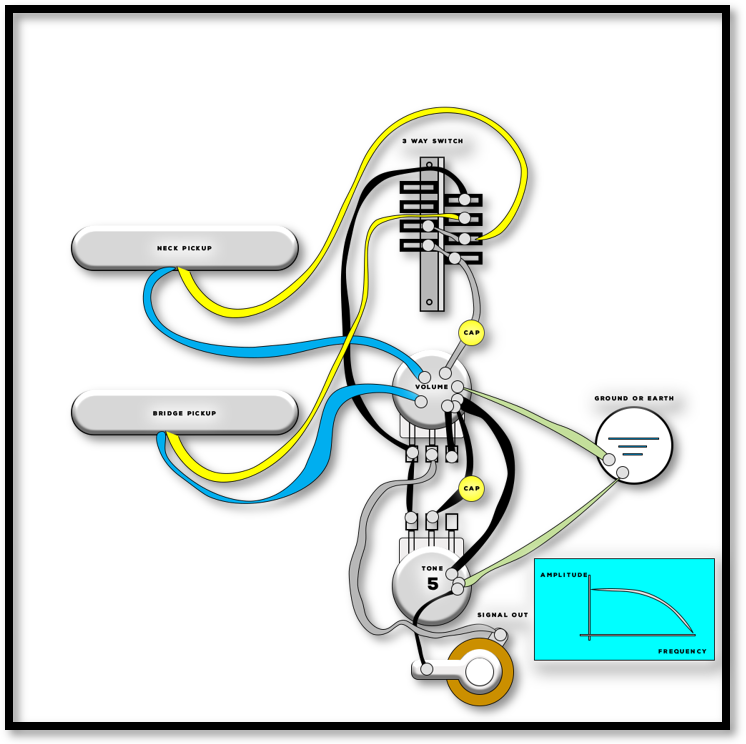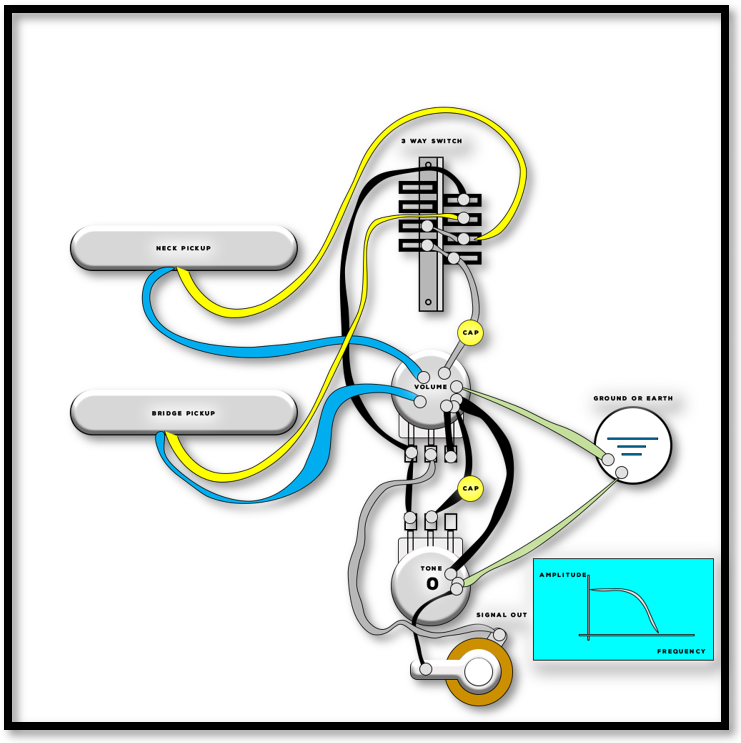What is the purpose and proper use of a tone knob on a guitar?
This article will help you understand more about the use of the tone knob including why it works the way it does and why we use it.
I’ve written a brief summary article and also a full detailed version for you to dig in to later!
Summary
What is the purpose and proper use of a tone knob on the guitar?
Just in case you really need to know right now, I’ve put a quick summary of the main article hear.
Well it affects the top end or high frequencies of your guitar signal.
The lower the number on the tone knob, the more high frequencies are removed from your signal.
In terms of proper use, this is really up to the player but it’s generally used to remove harshness from the guitar sound. You can also use it for more artistic effects such as a more mellow, jazz type sound or even more drastic effects such as in combination with a fuzz pedal.
Have a play with it and see what you make of it.
The main article goes through some background as to why the tone knob removes high frequencies and is hopefully useful!
Please feel free to join my free Fret Success Academy on the website.
CLICK HERE TO JOIN NOW!
Read on for the main article.
Main Article
So, what is the purpose and proper use of a tone knob on a guitar?
To put it simply, the tone knob’s purpose is to change the way your guitar sounds.
The proper use of it is up to the player and depends on what you want from your guitar sound.
It can be used to reduce the high frequencies to tame any harshness or take them away more drastically to get more of a mellow jazz tone or even a simplified Slash (Guns n’ Roses) sound.
The most basic form is a single knob that goes from 0 to 10 but there can be more sophisticated versions including those that can alter the bass and treble content of your signal.
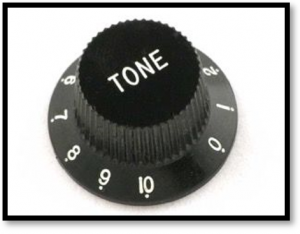
Electroacoustic guitars typically have even more control with bass, middle and treble dials and even through to microphone modelling simulators to give a more natural sounding signal.
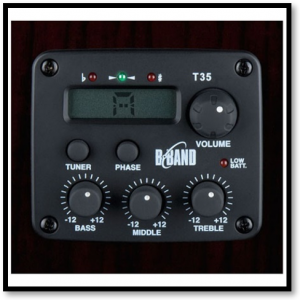
Let’s start with the basic, single knob, version first.
How does a single tone knob work?
Simply put, the tone knob changes the resistance in the guitar circuit and starts to introduce the influence from a capacitor to send some of the signal to ground.
A capacitor has the function to change the frequency response (how sound is affected when put through an electrical/acoustic system) of a circuit, i.e. the way the sound is changed when your guitar signal passes through it.
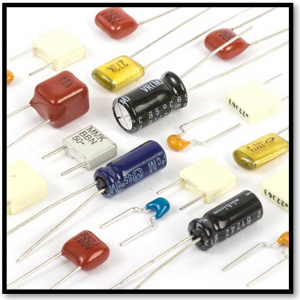
Capacitors have the potential to affect the audio signal depending on their capacitance and where they are in the circuit.
Changing the capacitor will change the function of the tone knob and especially how effective the tone knob is throughout its range.
Generally, as the tone knob value increases the less influence the capacitor has on the signal.
The lower the number on the tone knob the lower the cut off frequency of the low pass filter is apparent.
What is a low pass filter?
A low pass filter is one of the simplest audio filters there is.
The name gives you a clue!
It basically allows the low frequency signal through (low pass) and stops the high frequency sound or removes it from the signal.
The image below shows a low pass filter represented as a graphic equalizer (EQ).
You can see that the high frequencies are being attenuated by the graphic equalizer simulating a low pass filter.

The frequency at which the high frequency content is stopped by the filter is called the cut-off frequency.
In a guitar circuit, the tone knob and capacitor influence the cut-off frequency.
This is essentially the frequency at which the higher frequency audio signal is sent to ground and removed from that which is sent to your guitar output jack.
Typically, the range of a tone knob will go from 0 to 10. 10 has the minimum influence on the tone (full audio signal) and 0 has the maximum (most affect on signal).
Basic Electric Guitar Circuit
One of the simplest guitar circuits is that of the glorious Fender Telecaster using two single coil pickups, 3-way switch, single volume and tone knob.
The image below illustrates the Fender Telecaster circuit.

The pickup signal is essentially a voltage and current source.
The tone and volume knobs are the key resistive elements. You can get difference values for these but the most common at 250 kΩ and 500 kΩ.
The tone and volume knobs are used to vary the electrical resistance in the circuit. The knobs are variable resistors or potentiometers.
The resistance of a potentiometer is increased when the potentiometer is turned clockwise (from 0 to 10).
The tone knob then works with the capacitor to remove high frequency signal from the chain at the user’s discretion.
The resistance of the tone knob doesn’t really change with frequency but the capacitor’s resistance (impedance) does and is influenced by both the signal frequency and the capacitor value.
There is an equation that shows the relationship between all these elements are given below:

The higher the tone knob resistance (towards 10), the less high frequencies go to ground and the pickup signal is maintained and passes to the output socket; as electricity prefers the path of least resistance.
The images below show the frequency content of the signal out for Tone settings 10, 5 and 0.
It can be seen that the high frequency drops of when the tone number is lower.

How does the type of capacitor influence the tone knob function?
How do different capacitors influence the tone knob function?
The capacitor resistance is decreased if the capacitance or frequency of the signal passing through increases.
The physical nature of capacitors mean that high frequencies are less influenced by resistance of a capacitor when compared to low frequencies.
So, one way we can change the frequency response of the tone knob is by changing the value (capacitance) of the tone capacitor. A higher value tone knob capacitor equals a lower cut off frequency of the low pass filter.
You can use any capacitor you want but the I’ve listed the most common capacitance types going from highest cut off frequency to lowest below:
– 0.047 μF
– 0.033 μF
– 0.022 μF
– 0.01 μF
What are potential uses of the tone knob?
In terms of potential use of the guitar tone knob, this is really up to the player.
It’s generally used to remove harshness from the guitar sound.
You can also use it for more artistic effects such as a more mellow, jazz type sound or even more drastic effects such as in combination with a fuzz pedal.
If you have a slightly harsh sounding guitar just try putting your tone knob on the 8 setting and you should hear it mellow out a bit.
I use this technique if I’m using a slightly harsh amplifier, especially on the clean channel. You can also push this further and take the tone setting to 5 to get a mellow jazz sound.
Have a play with it and see what you make of it.
Drop a comment below with your favourite tone knob settings and what you use it for!
I hope this article has been of use.
I also have lots of free guitar lesson guitar available when you subscribe to the Fret Success Academy.
CLICK HERE TO JOIN NOW!
Thanks,
Dan
(Founder)
www.fretsuccess.com

